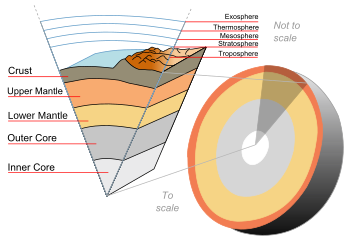Kepler 22b is an extrasolar planet in the constellation Cygnus occurring 600 light years away from Earth. It's mass is 0.11 and radius of 2.4 and discovered by NASA's Kepler Space Telescope in 2010.
It has a temperature of 262 K and is the first transiting planet to orbit within the habitable zone of a Sun-like star. It's discoverers are the Kepler science team when they looked through their space telescope and, according to science, is larger than Earth and it's star (Kepler 22) is thought to be only slightly smaller than the Sun.
The name "B" in it is because the star was discovered before it so it is named B, very much like the naming of the 1987a supernova. It's right ascension is 19h 16m 52.2s.It is the first extrasolar planet confirmed by Kepler to orbit within it's star's habitable zone.
It's radius is roughly 2.4 times that of Earth's radius but it's mass and surface composition remain still unknown.There is a real theory that the planet is "ocean-like" and similar to another planet, Gliese 1214b.
Tuesday, 5 June 2012
Sunday, 3 June 2012
The Inner Core
 The Inner Core is one of five sections of the Earth's Core that is the centre part.It was discovered in 1936
The Inner Core is one of five sections of the Earth's Core that is the centre part.It was discovered in 1936by seismologist Inge Lehmann.
It is thought to consist of iron-nickel alloy and may have a temperature similar to that of the Sun's surface, approximately 5430 C (5700 K). It is surrounded by thick layers of outer core, mantle, upper mantle and crust.
A man named J.A Jacobs was the first person to have a theory of the fact that the inner core was freezing and growing out of liquid outer core due to the gradual cooling of Earth's interior, which is about 100 degrees Celsius per billion years. It's innermost hottest part as detected by seismological studies, is a primarily solid ball approximately 1,220 km in radius or 70% of that of the moon.
The outer core is surrounded by a thick layer of mantle, which in some places under the ocean is actually exposed on the surface of the Earth.
Saturday, 2 June 2012
1987a Supernova
 1987a Supernova (also known as SN 1987a) is a supernova system on the edge of the Tarantula Nebula in the Large Magellanic Cloud. It is approximately 5.4 kiloparsecs from Earth (167,885 light years)
1987a Supernova (also known as SN 1987a) is a supernova system on the edge of the Tarantula Nebula in the Large Magellanic Cloud. It is approximately 5.4 kiloparsecs from Earth (167,885 light years)As it's name suggests, it was discovered in 1987 by Ian Shelton and Oscar Duhalde in the Las Campanas Observatory in Chile. On March 4th 1987 it was observed by the largest ultraviolet space telescope of that time, named Astron.
It is located in the constellation Dorado with a right ascension of 05h 35m 28.03s and it is the closest recorded supernova since the invention of telescopes.It is close enough to be visible to the naked eye but still outrageously far away. It is the closest observed supernova since SN 1604, which actually occurs in the Milky Way.
The "A" in the name comes from the fact that it was the first supernova discovered in 1987. The progenitor type is B3 supergiant,which has surface temperatures of 30,000-50,000 K
Cygnus X-1 Black Hole
The Cygnus X-1 Black Hole is a black hole system that is one of the strongest X-ray sources seen from Earth in the constellation Cygnus discovered in 1964 and was the subject of physicists Stephen Hawking and Kip Thorne.
It's age is approximately 5 million years old with a with a radial velocity of -13km/s and a right ascension of 19h 58m 21.67595s. It's mass is 14-16 and a radius of 20-22.It was discovered during a 1964 rocket flight.
The largest star in the Cygnus OB3 association has a mass 40 times that of the Sun. The Cygnus X-1 system shares a common motion through space with an association of massive stars named Cygnus OB3, located at approximately 2,000 parsecs from the Sun.Like all black holes, it is invisible and it's job in space is to suck in dead stars. In Star Trek, it is used by villains to destroy a planet they don't want.
It's variable type is ellipsoidal variable, also known as variable star.There is two types of variable star:
- Intrinsic variables, whose luminosity changes
- Extinsic variables, whose apparent changes in brightness are due to changes in the amount of their light that can reach Earth.
Subscribe to:
Comments (Atom)
